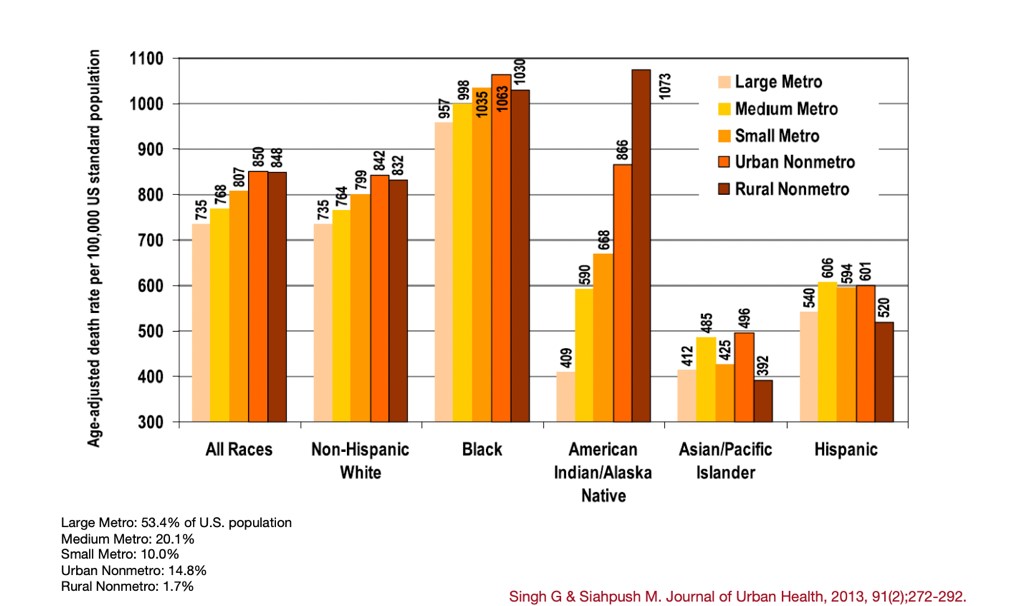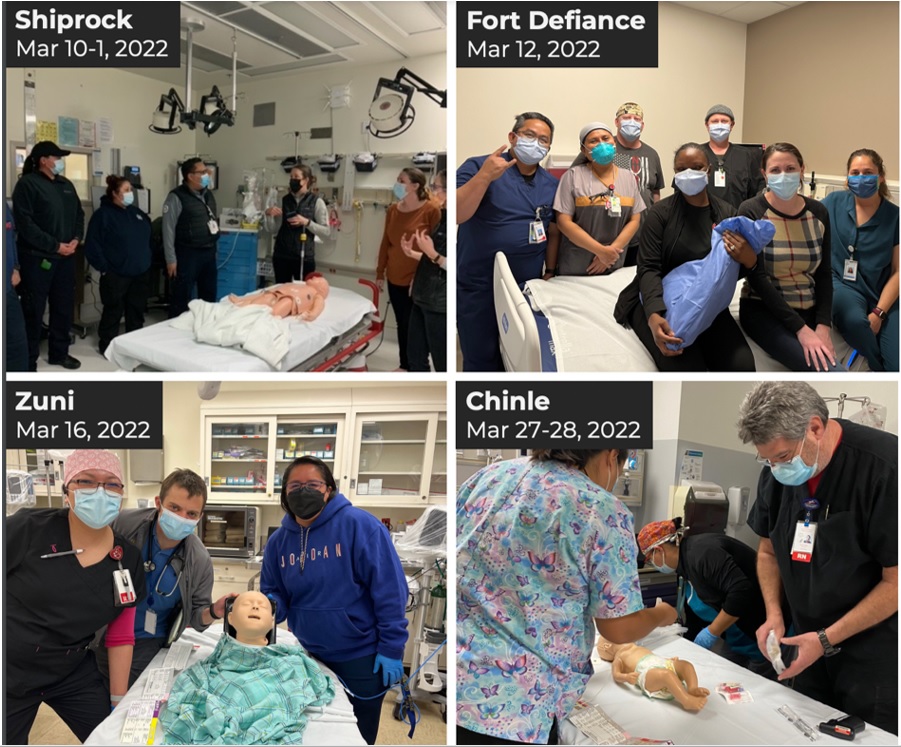EMS Resources
Indian Health Services-Emergency Medical Services for Children (EMSC)
The IHS-EMSC Hybrid Simulation Program
Established in 2021, the Indian Health Services-Emergency Medical Services for Children (IHS-EMSC) Hybrid Simulation Program aims to enhance the readiness of emergency departments (EDs) to treat acutely ill and injured American Indian/Alaska Native pediatric patients. The program is funded through an interagency agreement between IHS and the Health Resources and Services Administration. It’s led by the Children’s Hospital of Philadelphia working in collaboration with IHS and EMSC.
Why It Matters

American Indian/Alaska Native communities have a lower life expectancy and higher disease burden, with children specifically at higher risk. Most American Indian/Alaska Native pediatric patients access emergency care in facilities staffed by providers who may not have pediatric subspecialty training. Meanwhile, health emergencies in children are infrequent compared to adults. Many providers do not get as much hands-on exposure managing pediatric cases, especially the rare instances of critical pediatric illness or injury.
In 2013, the National Pediatric Readiness Project Assessment of IHS and Tribal EDs found a median score of 60.9 out of 100 (below the national median of 69). Scoring above an 87 is associated with as much as 70% reduced mortality in children.
How It Works

The IHS-EMSC Hybrid Simulation Program is modeled after the Improving Pediatric Acute Care through Simulation (ImPACTS) program. It connects academic medical center "hub" sites with IHS and Tribal "spoke" sites to conduct hands-on simulation training. The trainings use SimBox, which offers free, virtual, high-quality simulation resources (including realistic videos and detailed facilitation guides) on clinical topics ranging from newborn resuscitation to severe head injury. Each IHS or Tribal site appoints a pediatric emergency care coordinator (PECC), who partners with an academic medical center-based specialist to engage in the simulation curriculum. The program is designed to be sustainable and cost-effective, cutting out the need for high-cost and hard-to-access simulation centers and specialty equipment.
Our Impact
To date, the program has enrolled 13 Tribal/IHS ED teams. The program’s retention rate is 100%, with all participants reporting improved skills and knowledge. The program is also highly promoted by participants, and annual National Pediatric Readiness Project Assessment scores show net improvement.
What Participants Say
Here's what some of our participants have to say about their experience:
- Danita Koehler, MD, Southeast Alaska Regional Health Consortium-Wrangell Medical Center in Wrangell, Alaska: "SimBox is life-saving."
- Keri Fischer, RN, Cheyenne River Health Center, "The moment I stop learning is the moment I need to quit my job. If we are stagnant, our programs will be stagnant, our patients won’t receive the best care. We are in the middle of nowhere – we need to be on our toes 100% of the time."
- Tessa Facer, PA, Tséhootsooí Medical Center in Fort Defiance, Arizona: "We have been getting great feedback from nurses, MAs, and providers and have been getting enthusiastic responses for sims in the future. We used the manikin for the first time, and it seemed to go great. They were able to practice putting a BVM/non-rebreather on an infant, which was great. It’s been really great doing these sims because we get excellent feedback from everyone, including suggestions on better places to store equipment, suggestions on new equipment we may not have, and constructive feedback on communication and flow."
Do you work at an IHS/Tribal or academic medical center ED? Get involved!
The IHS-EMSC Hybrid Simulation Program is open to new partnerships. If you're interested in joining us or learning more, please contact the program co-leads:
- Ardith Aspaas: BSN, RN, Nurse Consultant, Emergency Medical Services for Children, Indian Health Service
- Elizabeth Sanseau MD, MS, FAAP, DTM&H, Attending Physician, Global Health Center and the Division of Emergency Medicine at Children's Hospital of Philadelphia
Learn More
- News article: “Harvard-Hospital Partnership Tackles Pediatric Emergencies In Lakota Country" Forbes, February 27, 2023
- Presentation: “Indian Health Service Pediatric Readiness IHS EMSC Hybrid Simulation program," Pediatric Pandemic Network, August 25, 2022
- Research: "Pediatric Readiness in Indian Health Service and Tribal Emergency Departments: Results from the National Pediatric Readiness Project," Journal of Emergency Nursing, January 2017
Additional Resources

- Bureau of Indian Affairs Emergency Management Division
- About Emergency Medical Services (EMS) Worker Safety - The National Institute for Occupational Safety and Health (NIOSH), CDC
- Emergency Preparedness, Response, and Recovery - CDC
- EMS.gov - National Highway Traffic Safety Administration Office of Emergency Medical Services
- Listing of EMS Associations - EMS.GOV, NHTSA
- EMS Focus: A Collaborative Federal Webinar Series - EMS.GOV, NHTSA
- United States Fire Administration EMS Resources Page - EMS.GOV,NHTSA
Funding
- FEMA Reimbursement of Costs for Emergency Medical Services [PDF - 226 MB]
Pediatric Emergency Services
Emergency Medical Services for Children (EMSC) – EMSC Innovation and Improvement Center (EIIC)
COVID-19 Resources
- Burnout, Self-Care and COVID-19 Exposure for First Responders (EMS17A) [PDF - 430 KB]
- Burnout, Self-Care and COVID-19 Exposure for Families of First Responders (EMS17B) [PDF - 353 KB]
- COVID-19 Behavioral Health Resources for First Responders (EMS27) [PDF - 508 KB]
- COVID-19: Considerations, Strategies, and Resources for Emergency Medical Services Crisis Standards of Care (EMS14) [PDF - 628 KB]
- COVID-19 - Disinfection of Structural Firefighting Personal Protective Equipment (EMS 26) [PDF - 814 KB]
- Epidemiology for COVID-19 Emergency Medical Service Providers: What You Need to Know (EMS21A) [PDF - 306 KB]
Webinar Recordings
Hosted by NHTSA’s Office of EMS in March 2020, Crisis Standards of Care and COVID–19: What EMS Needs To Know featured experts on implementing crisis standards of care at the state and local levels and covered:
- Why crisis standards of care planning is so critical in the prehospital setting
- How one state is preparing for a surge in demand for EMS services
- Implications for local EMS leaders who may have to implement crisis standards of care in their communities
The August 2020 Native American and Rural Emergency Medicine Conference "Impact of COVID-19 in our Communities Now and Innovative Care and Prevention Strategies Moving Forward," held by the Native American Emergency Medicine Consortium, focused on:
- The impact of COVID-19 and the collective response on the national, state, and local levels
- Public health perspectives and the implications of vaccine development


